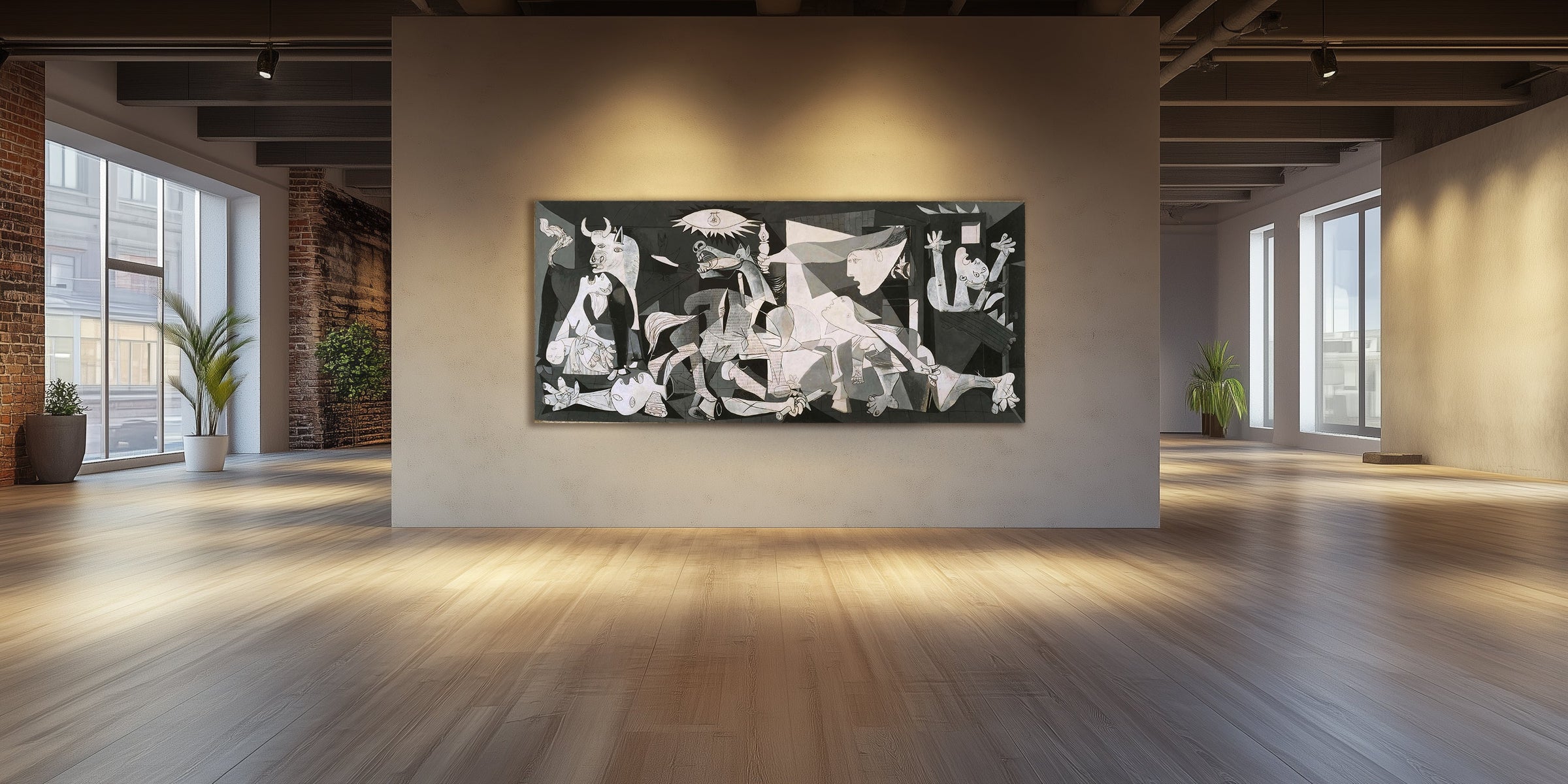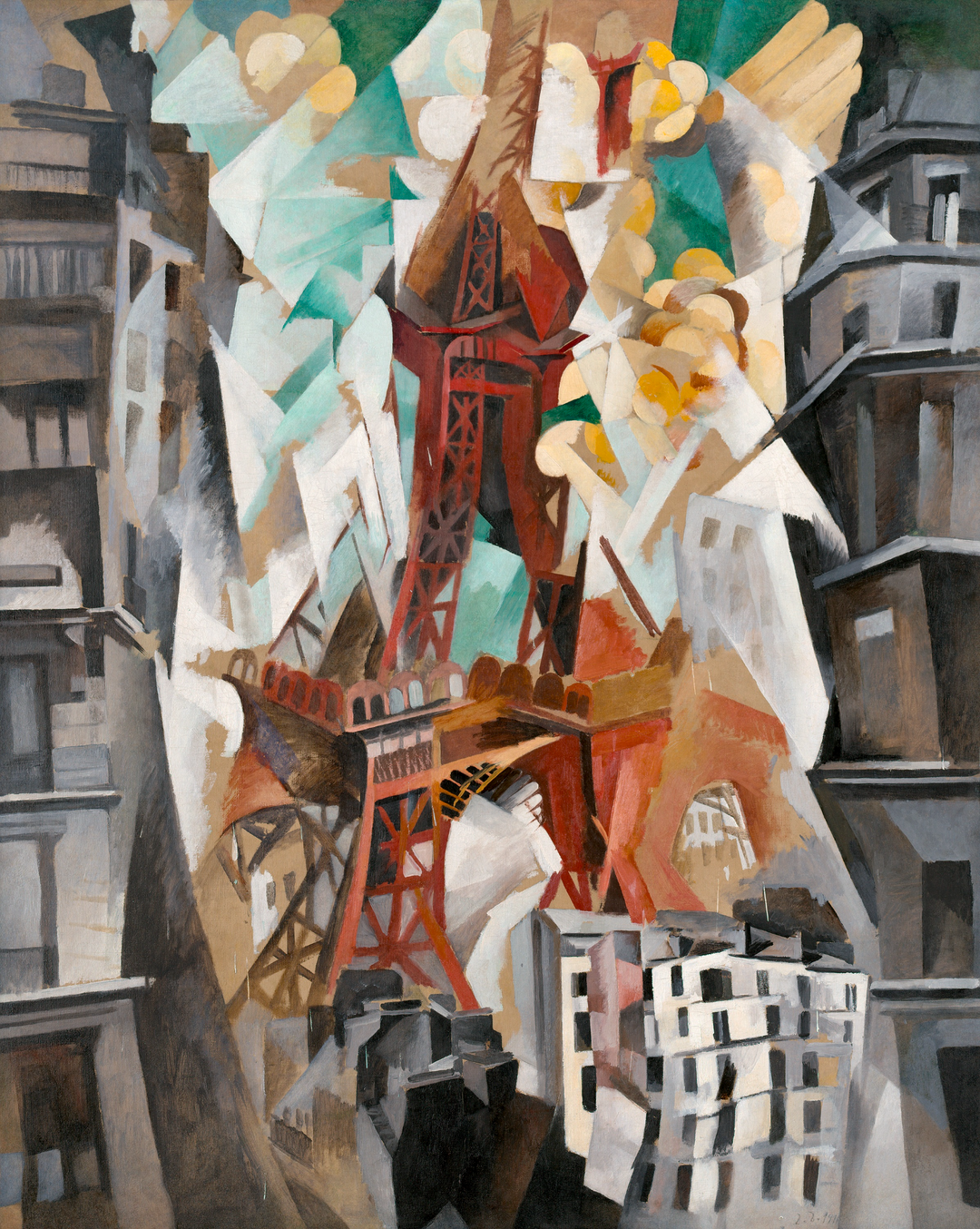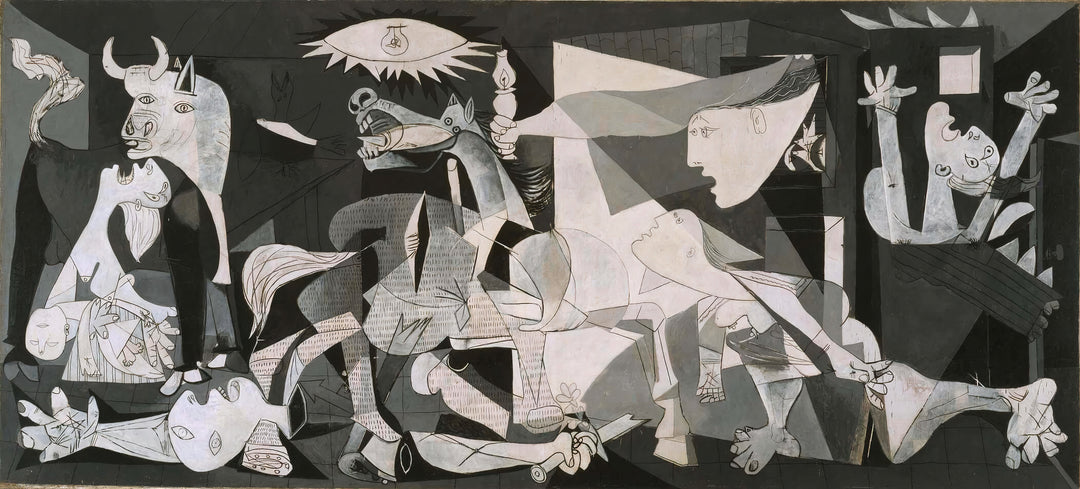
Cubism
Cubism, a revolutionary artistic movement that emerged in the early 20th century, originated by Pablo Picasso and Georges Braque, revolutionized artistic perception by introducing a fragmented and multi-angular vision of reality, thus challenging traditional methods of spatial representation. This movement was deeply inspired by the theories of Paul Cézanne and African sculpture, which were notable for their geometric simplification and their break with Renaissance perspective. Cubism developed in three main phases: Cezannian Cubism, Analytical Cubism, and Synthetic Cubism, each marking an evolution in the abstraction and manipulation of space and form.
Cezannian Cubism (Paul Cézanne), considered a precursor of Cubism, applied techniques that broke with traditional perspective, using basic geometric forms and multiple views to represent objects on his canvases, which suggested volume and depth in an innovative way. His focus on structure and the simplification of natural elements into geometric forms directly inspired the founders of Cubism to explore new dimensions in pictorial representation.
During its Analytical phase (1907-1912), Cubist artists deconstructed objects into geometric figures and reorganized them on the canvas, challenging conventional notions of depth and perspective through the use of earthy colors and multiple shadows. In contrast, Synthetic Cubism (post-1912) introduced textures and materials from the real world into the works, employing more vivid colors and simplified forms that emphasized the interaction between reality and representation.
Artists like Juan Gris and Albert Gleizes continued to explore and expand the possibilities of Cubism, incorporating more colorful and dynamic elements, which would ultimately influence later movements such as Futurism, Dadaism, and Surrealism. These movements adopted Cubist abstraction and integrated it into their own aesthetic and philosophical investigations, expanding the reach of modern art.







